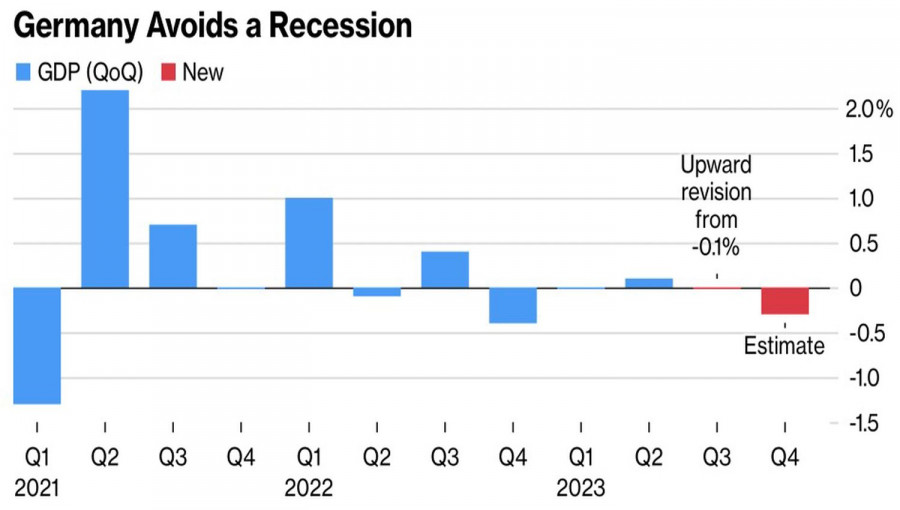Buy if the market is rising, sell if it's falling. Investors prefer trends. And when inflation in the USA began to slow down from its June peak, they saw a trend in it. Many believed that the same would happen in 2024. That CPI and PCE would quickly drop to the 2% target, and the Fed would start cutting rates as early as March, bringing them down to 4% by the end of the year. Unfortunately, the downward trend in consumer prices gives investors a false sense of security. The Federal Reserve is unlikely to be swayed by market whims. And EUR/USD has finally understood this.
The main currency pair is stuck in a narrow trading range of 1.08-1.100, and even significant statistics on American employment and inflation couldn't break it out of there. ECB officials are trying their best to dissuade investors from the rationale of betting on a 150 bps decrease in borrowing costs. European Central Bank President Christine Lagarde stated that the central bank would ease monetary policy when it is confident that inflation will return to the target. Philip Lane noted that market expectations are dangerous. History shows that prematurely declaring victory over inflation risks its return.
However, if the ECB's persistent reluctance to perform a dovish pivot supports EUR/USD, then the weakness of the German economy puts pressure on the euro. In the fourth quarter, it shrank by 0.3%, and if the data for the third quarter had not been revised upwards, the country would have faced a technical recession. Nonetheless, a 0.3% GDP contraction for the year, as a whole, convinces that the once locomotive of the European economy is now stuck and dragging the currency bloc into the mire.
Dynamics of the German Economy

The U.S. stock indices, whose growth is perceived as an improvement in global risk appetite, extend a helping hand to EURUSD. Conversely, safe-haven assets like the U.S. dollar should struggle. In this regard, the fact that the S&P 500 is within arm's reach of its historical high should inspire euro enthusiasts. However, it's difficult to expect the same surge in the broad stock index as in October-December against the backdrop of a slowing U.S. economy. Wall Street Journal experts believe that its growth rate in 2024 will decrease from 2.6% to 1%.
The bulls of the S&P 500 and EUR/USD are also not optimistic about the historically confirmed decline in corporate earnings during cycles of easing Federal Reserve monetary policy. It's not surprising, as the central bank typically provides monetary stimulus during recessions, which is not the case currently.
Dynamics of EPS and Federal Funds Rate

The stock market may have been scared of its own greed and hesitates to take another step towards the historical peak. Its indecision could end badly for the main currency pair.
Technically, the consolidation in the range of 1.088-1.1 on the daily chart of EUR/USD continues. For the pair to determine the direction of further movement, it needs to break out of the trading channel. For now, one should stick to intraday trading strategies.
The material has been provided by InstaForex Company - www.instaforex.comfrom Forex analysis review https://ift.tt/aigPsAM
via IFTTT
